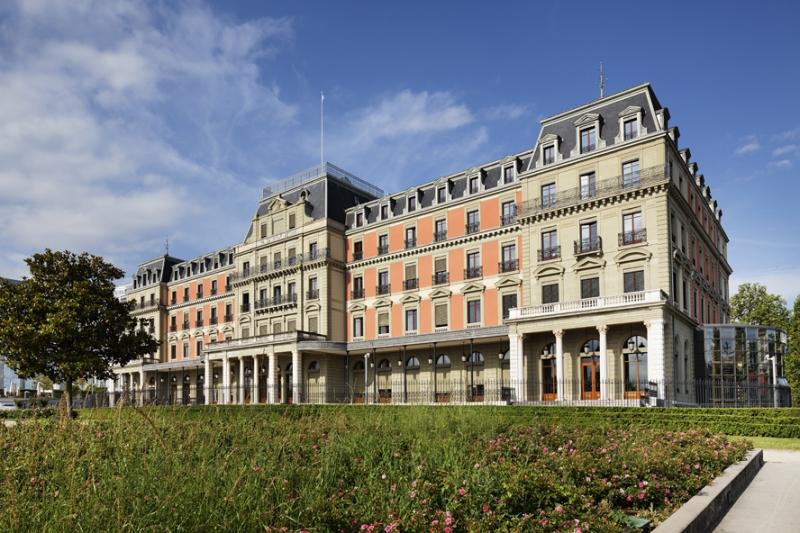
The turbulent history of the Palais Wilson
The Palais Wilson – a grand sandstone building on Lake Geneva named after American President Woodrow Wilson - recently opened its doors to the public to mark the 70th anniversary of the Universal Declaration of Human Rights. Home to the Office of the United Nations High Commissioner for Human Rights (OHCHRExternal link) since 1998, its French Neo-Renaissance exterior conceals a turbulent past.
The Palais Wilson began life as the Hotel National, a luxury hotel that opened in 1875 for wealthy European holidaymakers. But the high costs weighed heavily on the developers, one of whom killed himself by jumping out of a window two months before the building was finished. The chic guesthouse struggled partly due to its location in the Pâquis area. Two years after opening, the National went bust and was sold at auction.
After the First World War, a new owner modernised the hotel and installed an elevator. But it would soon undergo another transformation after a visit to the city in 1920 by the League of NationsExternal link secretary general Eric Drummond. He was looking for a headquarters for the recently created organisation and fell in love with the National. The League bought the hotel for CHF5.5 million ($5.5 million) and turned it into offices and meeting rooms.
In 1924, the hotel was renamed Palais Wilson after the death of US President Woodrow WilsonExternal link and Nobel Peace Prize laureate, who played an important role in the establishment of the League of Nations after the war. The League of Nations stayed at the Palais Wilson until 1937, but as it expanded it was forced to move to the purpose-built Palais des NationsExternal link nearby.
After the League’s departure, the future of the Palais Wilson was again up in the air. The Swiss government and the Geneva authorities stepped in and bought the premises and later set up federal and cantonal government offices. By the late 1980s, the property had fallen into disrepair. Then disaster struck. Fires in 1985 and 1987 severely damaged parts of the building.
Following the Earth Summit in Rio de Janeiro in 1992, the Swiss government took over the ownership of the building and extensively renovated it from 1993 to 1998. The Swiss wanted to bring together the world’s main environmental organisations under one roof. But it was not to be. Eventually, in 1998 OHCHR External linkmoved in after being offered a preferential rate.
But the saga is not over. OHCHR now has 700 staff in Geneva, split between the Palais Wilson and another office in the city. The UN agency’s plan is to regroup all personnel in a new building on the Palais des Nations complex by 2023. The Palais Wilson, which still belongs to the Confederation, will then be given a new lease of life.
Text adapted from OHCHR exhibition and Joëlle Kuntz’s book, “International Geneva – 100 years of architecture”



































You can find an overview of ongoing debates with our journalists here . Please join us!
If you want to start a conversation about a topic raised in this article or want to report factual errors, email us at english@swissinfo.ch.